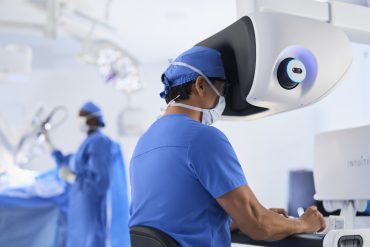
- Healthcare
Economic Toll of Antibiotic Resistance Set to Exceed $2 Trillion
6 minute read

Antibiotic-resistant infections strain global healthcare systems as research funding drops and treatment costs soar worldwide
Key Takeaways
- $2 trillion annual economic impact by 2050: Superbugs threaten to impose nearly $2 trillion in yearly costs on the global economy, with the US facing $295.7 billion in GDP losses and the UK $58.6 billion.
- 10 million deaths projected annually: Antimicrobial resistance could cause a 60% increase in deaths by 2050, reaching 1.34 million annual deaths in the US and 184,000 in the UK from antibiotic-resistant infections.
- Foreign aid cuts worsen crisis: The US has slashed aid spending by 80% while the UK cut its aid budget from 0.5% to 0.3% of gross national income, potentially accelerating superbug development in vulnerable countries.
Introduction
Antimicrobial resistance poses an unprecedented threat to global health and economic stability, with new modeling predicting catastrophic consequences within the next 25 years. The Guardian reports that superbugs could impose nearly $2 trillion in annual costs on the world economy by 2050.
The Center for Global Development’s research reveals that resistant bacteria and fungi are outpacing antibiotic development at an alarming rate. This crisis affects healthcare systems worldwide, with routine infections and minor injuries potentially becoming deadly as standard treatments lose effectiveness.
The timing proves particularly concerning as major economies simultaneously reduce foreign aid funding for antimicrobial resistance programs. These cuts occur just as developing nations need support most to prevent the spread of resistant pathogens globally.
Key Developments
Recent policy decisions have accelerated the antimicrobial resistance timeline. The UK government suspended funding for the Fleming Fund, which combats resistant infections in low- and middle-income countries. The Trump administration confirmed a $9 billion reduction to its foreign aid budget, while European nations including France and Germany have implemented substantial cuts.
Anthony McDonnell, policy fellow at the Center for Global Development, notes these reductions create dangerous gaps in global surveillance and treatment programs. The US has reduced aid spending by approximately 80%, while the UK decreased its commitment from 0.5% to 0.3% of gross national income.
The pharmaceutical industry faces a broken business model for antibiotic development. Companies receive low financial returns because antibiotics are used sparingly to prevent resistance, unlike drugs for chronic conditions that generate consistent revenue streams.
Market Impact
Healthcare costs related to antimicrobial resistance currently reach $66 billion annually worldwide. Projections indicate these expenses could rise to $159 billion by 2050 without intervention measures.
Treatment costs for resistant infections cost twice as much as standard antibiotic-treatable cases. Global treatment expenses could increase by $176 billion annually, with the UK’s costs rising from $900 million to $3.7 billion and US expenses climbing from $15.5 billion to nearly $57 billion.
The broader economic impact threatens to reduce global GDP by 2% annually. China faces potential losses of $722 billion yearly by 2050, while Japan could lose $65.7 billion under current trajectory models.
Strategic Insights
The superbug crisis creates both challenges and opportunities across multiple sectors. Healthcare technology companies are developing AI-powered diagnostic tools and treatment platforms to address the growing threat. Pharmaceutical firms face pressure to develop new business models that make antibiotic research financially viable.
Innovation pipelines show promise through artificial intelligence applications. MIT and Google have developed AI tools that analyze resistance patterns and accelerate drug discovery timelines. Google’s AI system recently solved a decade-old scientific problem about superbugs within 48 hours.
Investment opportunities emerge in infection prevention technologies, rapid diagnostic systems, and alternative therapies. The UK has initiated subscription models to incentivize new treatment development, while vaccination programs expand to prevent infections before they require antibiotic treatment.
Expert Opinions and Data
Dr. Mohsen Naghavi from the Institute for Health Metrics and Evaluation emphasizes the urgent timeline facing healthcare systems. He warns that current medicines are becoming ineffective and calls for immediate policy changes from US, European, and UK governments.
Research indicates that investing $63 billion annually in innovation and treatment access could deliver a 28:1 return on investment. This funding could generate $680 billion in health benefits and potentially boost the global economy by $960 billion through 2050.
A UK government spokesperson acknowledges antimicrobial resistance as a major threat in the country’s 10-year health plan. The government reports progress in reducing antibiotic usage in agriculture and developing subscription models for treatment innovation while maintaining international partnerships.
The study covers 122 countries and identifies bloodstream infections, respiratory infections, and surgical site infections as the primary areas where resistance threatens current treatment protocols. These infections require increasingly expensive second-line treatments and extended hospitalizations.
Conclusion
Antimicrobial resistance represents a convergence of health, economic, and policy challenges that require immediate coordinated response. The projected $2 trillion annual impact by 2050 demonstrates how infectious disease threats can reshape global economic structures.
Current trends indicate healthcare systems face a potential return to pre-antibiotic conditions where routine procedures become high-risk endeavors. The simultaneous reduction in international aid funding creates additional vulnerabilities as resistant pathogens develop in regions with limited surveillance capacity.
Success in addressing this crisis depends on sustained investment in research, improved global coordination, and business model innovations that make antibiotic development financially sustainable for pharmaceutical companies.








